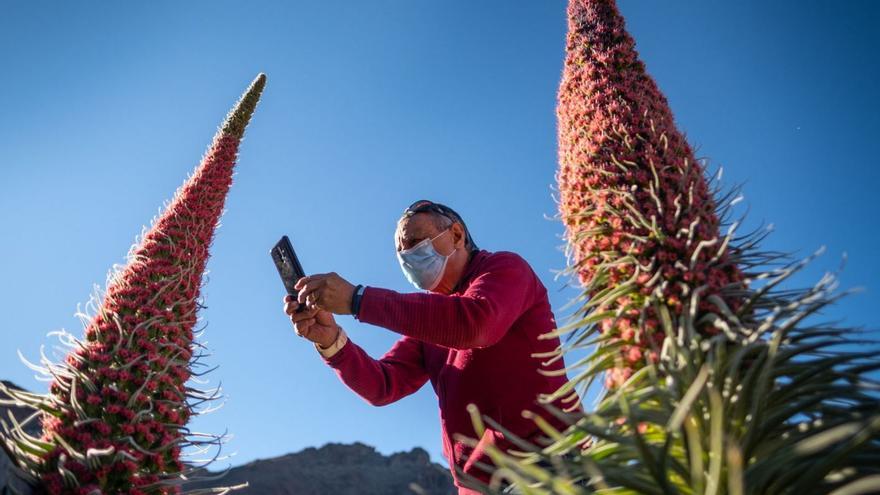
Nueva Canarias (NC), a party founded in 2005 on the island of Gran Canaria, presented yesterday at the Ministry of Ecological Transition, Fight against Climate Change and Territorial Planning of the Canary Islands Government a document with half a dozen allegations to the Master Plan for Use and Management (PRUG) of the Teide National Park including the request for the creation of a fee so that non-residents pay to access this space.
The secretary for Territorial Implementation of the training, Valentin Correa from Tenerife, explains that “with this initiative we intend to contribute our particular vision and contribute to the improvement of the management of this unique natural space, which is a symbol for all Tenerife residents, the Canary and the tourists who visit it. Correa highlights that one of the most important allegations is related to the creation of “a final rate, for non-residents, that taxes visits to the National Park.”
“It would be a fee, from which residents would be exempt, whose purpose would be to finance all those necessary actions, both for the implementation of the PRUG and the measures it contains. It is evident that the National Park needs financial funding and technical and human material with which to carry out all that it proposes”, explains Correa.
Nueva Canarias in Tenerife, with the collaborator Jesús Arvelo Hermida, a member of the group Salto a la Transición Ecológica, also proposes three alternatives to the creation of bus shuttles which, in turn, would serve as infrastructure to house private vehicles: «The first would maintain the two interchanges in the southern area, in Vilaflor and Guía de Isora, but would remove the one planned in El Portillo. We consider that the latter is an erroneous location, as it is within the National Park itself, and we propose to subdivide it into two with less capacity, one in Aguamansa, in La Orotava, and the other in La Esperanza».
With this proposal regarding the controversial interchanges, NC considers that “the distances to be traveled by private vehicle would be considerably reduced, since they would remain in Aguamansa, saving the remaining 13 kilometers to El Portillo, and in La Esperanza, preventing passenger cars from go another 36 kilometers to the place initially designated by the PRUG for vehicles accessing from the north face».
This last alternative “would also provide the advantage of converting the population centers and surrounding areas of Aguamansa and El Rosario into ideal places for gastronomic, rural or commercial tourism, since in El Portillo there would be no such possibility and building a transport interchange would mean a serious visual impact for the National Park.
In the second option, it is collected that the interchanges contemplated in the initial phase of the PRUG “are located on the margins of the TF-1 and TF-5”. A possibility that “would prevent the interference of the private vehicle in the secondary roads that run through the middle and upper areas, further reducing pollution.” It is proposed that the North interchange “be located in the El Ramal area, enabling a place to leave the car and take public transport or even serve as a starting point for a BUS-HOV lane to the metropolitan area.”
The third proposal is to “do without these transport interchanges to create starting points in tourist centers and municipalities with the exit, from the current bus interchanges, of direct lines to the National Park.”
















